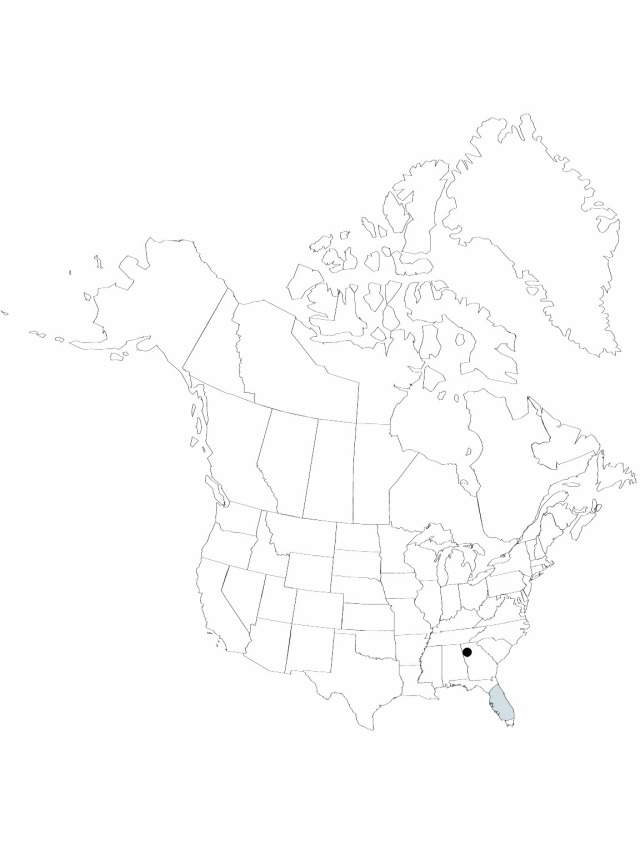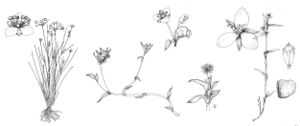Difference between revisions of "Callisia cordifolia"
Contr. Arnold Arbor. 9: 117. 1935.
FNA>Volume Importer |
FNA>Volume Importer |
(No difference)
| |
Revision as of 19:03, 24 September 2019
Herbs, perennial, mat-forming. Leaves 2-ranked, gradually reduced toward end of flowering shoot; blade lanceolate or lanceolate-elliptic to ovate, 1–3 × 0.5–1.4 cm (distal leaf blades much narrower than sheaths when sheaths opened, flattened), margins scabrous, glabrous. Inflorescences terminal and axillary from distal leaves, pedunculate, composed of pairs of sessile cymes; bracts linear to linear-lanceolate, 2–6 mm. Flowers odorless, 4–5 mm wide, pedicillate; sepals distinct, maroon, 2–3 mm; petals white, ovate, 2.5 mm; stamens 6, nearly equal or antipetalous stamens slightly longer than antsepalous; filaments glabrous; ovary 3-locular. Capsules 3-locular. Seeds 0.6–0.7 mm. 2n = 14 (as floridana).
Phenology: Flowering spring–fall.
Habitat: Moist, usually shady places with calcareous soil, e.g., hummocks, fern grottoes, shell middens
Distribution

Fla., Ga., Mexico, West Indies, n South America.
Discussion
The single Georgia record, a specimen labeled Rome, Floyd County (Babcock s.n., MO), is considered credible by Dr. Nancy Coile.
Selected References
None.
